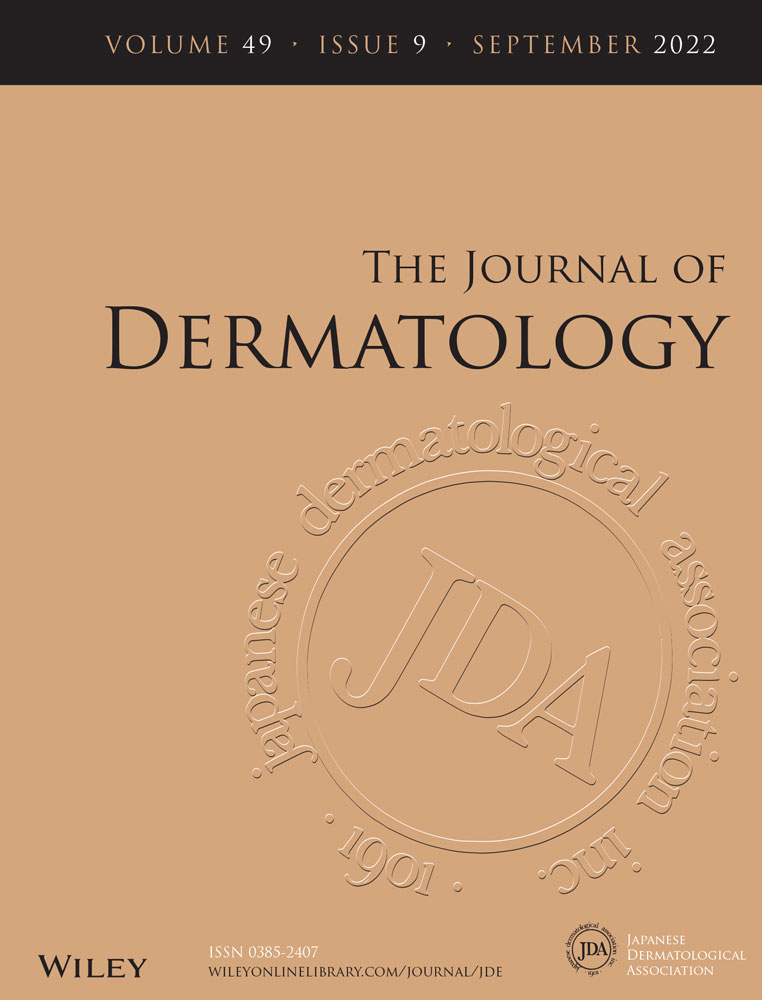Loss of epidermal Langerhans cells in psoriasiform lesions of de novo induced or worsened pre-existing psoriasis following uses of immune checkpoint inhibitors
Abstract
Immune checkpoint inhibitors (ICI), including monoclonal antibodies to programmed death 1, programmed death ligand 1, and cytotoxic T lymphocyte-associated antigen 4, have provided great therapeutic benefits for cancer patients at advanced stages. However, the introduction of ICI frequently results in the development of immune-related adverse events (irAE) through activation of autoreactive T cells. Here, we present three cases of cancer patients with cutaneous irAE, including development of de novo psoriasis and exacerbation of pre-existing psoriasis. Interestingly, these patients shared an altered histological feature characterized by loss of epidermal CD1a+ cells, namely Langerhans cells (LC), in the psoriasiform lesions in contrast to “conventional psoriasis” exhibiting unchanged or activated LC. A possible underlying mechanism was that ICI-mediated hyperactivation of effector T cells contributed to aggravation or establishment of psoriasis phenotype, which might be associated with direct cytotoxicity or expulsion of LC from the epidermis.
CONFLICT OF INTEREST
None declared.




